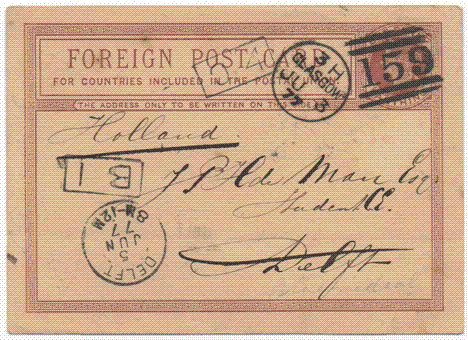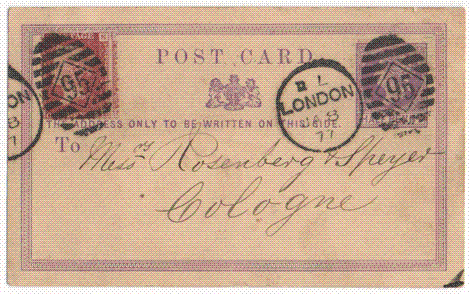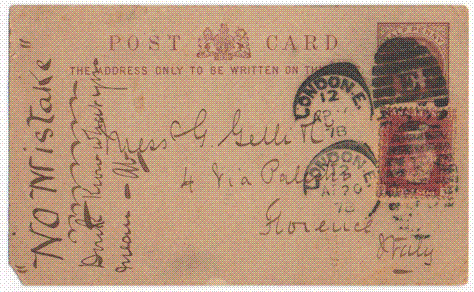Uprated Postcards
UPRATED POSTCARDS
by Colin Baker
Before the signing of the Treaty of Berne and the formation of the General Postal Union (GPU) in October 1874, individual countries had to make their own arrangements between themselves for the handling and delivery of mail coming from a foreign country. But on 1st July 1875 this came to an end, at least as far as the GPU member countries were concerned. All those who had signed the Treaty of Berne agreed to charge the same rate of postage for mail sent to another country, each member retaining all the postage paid to them, and to give the same preference to both inland mail and that from other countries. The basic overseas rate for letters was set at 25 Swiss centimes, or the local currency equivalent. In the case of Great Britain this was 2½d for letters weighing up to half an ounce, a rate that remained the same for nearly 50 years.
One other postage rate agreed by the GPU was that postcards sent to a foreign country would be charged half the basic letter rate, or 12½ Swiss centimes. For Great Britain this was 1¼d and new postcards were produced specifically for this purpose [Figure 1]. No premium was allowed on the cost of foreign rate postcards and they had to be sold for just 1¼d, unlike their inland counterparts which had cost more than the basic ½d soon after they were first introduced in 1870.

Figure 1. A 1¼d postcard used to Delft, Holland on 3rd July 1877.
Although special postcards were produced for sending overseas, there were no restrictions on using inland postcards for this purpose providing they were printed with a prepaid stamp (ie were postal stationery postcards) and if necessary had additional adhesive stamps added to make up the correct postal rate. However, in the early years of the foreign postcard it was unusual for this to happen. There were never any stamps using the farthing coin issued in Great Britain (i.e. ¼d or ¾d stamps) and so it was impossible to make up an inland ½d postcard to exactly 1¼d to match the price of the stamp on the 1875 foreign postcard. Anyone trying to use an inland postcard to a foreign country was giving away a ¼d and also paying an unnecessary premium for the postcard itself.

Figure 2. The 1875 issue ½d inland postcard uprated to 1½d
and used to Germany on 8th January 1877.

Figure 3. An 1878 issue inland postcard uprated with a Penny Red
and used to Italy on 20th April that year.
The two postcards illustrated here [Figures 2 & 3] are nice examples of this happening. Did the writers not realise that they had to use a different value postcard on foreign mail to those they used within the UK? Then when they took them to the local post office they were told otherwise? Perhaps they did not have a 1¼d postcard and could not get to the post office to buy one. Thus they had to use an uprated inland postcard which they could pop into the nearest pillar box. We'll never know, but they have provided us with a couple of interesting items.
In 1878 the GPU became the UPU (the Universal Postal Union) and by this time many more countries had joined. The 1¼d rate set in 1875 only lasted four years and was replaced in April 1879 with new rates of 1d, 1½d and 2d which were agreed between UPU members, depending on the postcard's destination. Never again would the farthing feature in a British postal rate.
Notes on British currency: In Great Britain in the middle of the 19th century the penny (1d) was quite a valuable coin to many people who only earned about ten shillings a week (equal to 120 pennies). The penny was divided into two half pennies and these again were divided into two farthings, making four farthings equal to one penny.
(This article is reproduced from the November 2010 issue of The Postal Stationery Society Journal.)